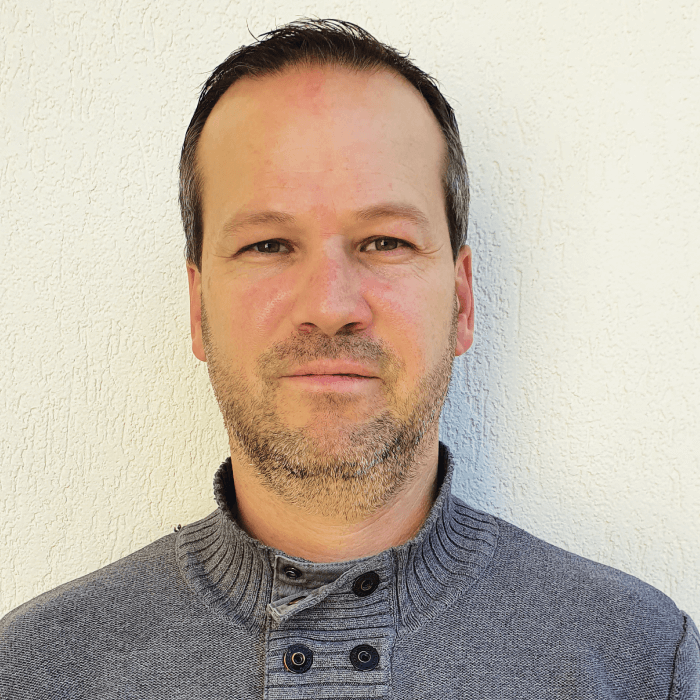
My main area of research has always been analytical chemistry, and in particular HPLC – a technique that has evolved rapidly since the turn of the millennium. UHPLC systems, core-shell column technology, and MS hyphenation are great examples of this evolution. Today, research in analytical chemistry is more often driven by applications than techniques, which is unfortunate; fundamental instrument research is important to make significant progress. I used to mix fundamental and applied aspects of HPLC, but now I apply HPLC (often coupled with MS) to the characterization of biopharmaceutical products, such as monoclonal antibodies, fusion proteins, and antibody-drug conjugates. More specifically, I focus on the development of innovative analytical strategies to improve speed, selectivity, and sensitivity.
In fact, analytical chemistry plays a critical role in almost every aspect of the drug development process, from discovery to development and commercialization, by providing assurances regarding medicine quality, safety, and efficacy. Constant improvements in analytical methods (for example, through improved selectivity and enhanced sensitivity to detect levels of impurities as low as 0.01 percent) are key to that mission. And that’s why there is also a constant drive to develop new analytical tools for the rapid and accurate assessment of the safety of protein-based products. Ultimately, analytical science exists to protect patients.
Limited selectivity and insufficient separation between biopharmaceutical isoforms – which can have differing toxicity profiles – (especially with HPLC-MS) is the greatest challenge we face. We can improve the characterization of complex drug products by increasing the number of dimensions in our analytical setup. Multidimensional LC and the addition of IMS before MS are fantastic ways through which we can achieve this; however, each is associated with shortcomings – the former can be difficult to use and the latter suffers from limited resolution. IM-MS instruments with increased resolution for reasonable costs could be transformative for the field!
Working with colleagues from Genentech (Cinzia Stella and Julien Camperi) over the past two years, we have developed an automated, multidimensional LC approach capable of separating charge variants in ion-exchange chromatography for subsequent chemical reduction, trypsin digestion, peptide separation, and detection by Orbitrap MS. Our approach, involving four chromatographic dimensions and MS, allows us to rapidly identify and localize chemical modifications on proteins in biopharma and beyond.
Outside of our own research, I’m also very fond of the work of Therese Wohlschlager and Christian Huber at the University of Salzburg, Austria. They have developed a powerful analytical approach based on the combination of enzymatic digestion and high-resolution MS to discern the numerous glycoforms of fusion proteins. Fusion proteins are very complex due to their glycosylation profiles; the detailed characterization of these glycoforms is essential for ensuring product safety and efficacy.
It is true that my work at University is quite diverse, but I love that! No two days are the same. My agenda is a mix of teaching activities for pharmacy students, academic research, project management with industrial partners, consultancy for external companies, training courses for industry, and handling manuscripts submitted to the Journal of Chromatography B (I’m an Associate Editor!).
Of course, this can be tricky to squeeze in alongside spending time with my wife and kids, but I do my best. I have two daughters (ages 15 and 11) and one son (14), and we like to do all sorts of activities together: ski, bowling, pool, and travel. In a normal year, we like to take the kids to a foreign country at least once – but our holidays are on hold for the time being.
I have indeed won several awards, including a spot on The Analytical Scientist’s Power List a number of times over the years! I am particularly proud of being the recipient of the Jubilee medal from the UK Chromatographic Society in 2018, though. Previous great recipients of this award include Ian Wilson, Mary Wirth, Michael Lämmerhofer, Fabrice Gritti, and Gert Desmet; it’s an honor to be put on a pedestal alongside them.
I had two mentors in my career. The first is Sabine Heinisch, who taught me lots about core chromatography concepts during my PhD. She is both innovative and passionate in her work – that passion may have rubbed off on me a bit! My second mentor was then Jean-Luc Veuthey – an experienced and trusted adviser, who maintains a steady view of future trends in the field. He also has connections across industries and with many chromatography instrument providers, which is particularly valuable in our lab!




